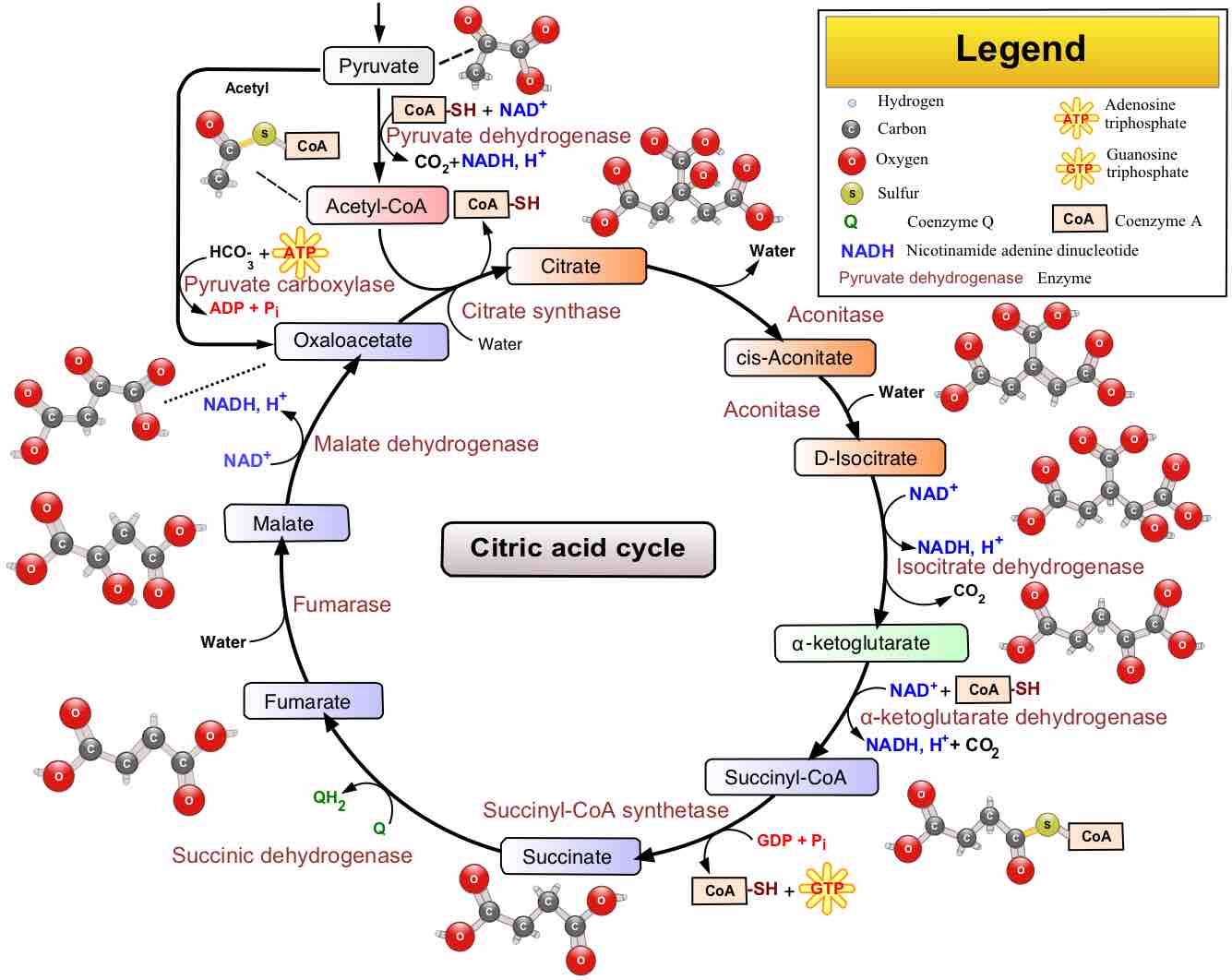The citric acid cycle, shown in —also known as the tricarboxylic acid cycle (TCA cycle) or the Krebs cycle—is a series of chemical reactions used by all aerobic organisms to generate energy through the oxidation of acetate—derived from carbohydrates, fats, and proteins—into carbon dioxide. The cycle provides precursors including certain amino acids as well as the reducing agent NADH that is used in numerous biochemical reactions. Its central importance to many biochemical pathways suggests that it was one of the earliest established components of cellular metabolism; it may have originated abiogenically.

The Citric Acid Cycle
The citric acid cycle, or Krebs cycle, is a series of chemical reactions used by all aerobic organisms to generate energy through the oxidization of acetate—derived from carbohydrates, fats, and proteins—into carbon dioxide. In addition, the cycle provides precursors including certain amino acids as well as the reducing agent NADH that is used in numerous biochemical reactions.
The name of this metabolic pathway is derived from citric acid, a type of tricarboxylic acid that is first consumed and then regenerated by this sequence of reactions to complete the cycle. The cycle consumes acetate (in the form of acetyl-CoA) and water, reduces NAD+ to NADH, and produces carbon dioxide. The NADH generated by the TCA cycle is fed into the oxidative phosphorylation pathway. The net result of these two closely linked pathways is the oxidation of nutrients to produce usable energy in the form of ATP.
Components of the TCA cycle were derived from anaerobic bacteria, and the TCA cycle itself may have evolved more than once. Theoretically there are several alternatives to the TCA cycle, however the TCA cycle appears to be the most efficient. If several alternatives independently evolved, they all rapidly converged to the TCA cycle.
The citric acid cycle is a key component of the metabolic pathway by which all aerobic organisms generate energy. Through the catabolism of sugars, fats, and proteins, a two carbon organic product acetate in the form of acetyl-CoA is produced. Acetyl-CoA along with two equivalents of water (H2O) are consumed by the citric acid cycle, producing two equivalents of carbon dioxide (CO2) and one equivalent of HS-CoA. In addition, one complete turn of the cycle converts three equivalents of nicotinamide adenine dinucleotide (NAD+) into three equivalents of reduced NAD+ (NADH), one equivalent of ubiquinone (Q) into one equivalent of reduced ubiquinone (QH2), and one equivalent each of guanosine diphosphate (GDP) and inorganic phosphate (Pi) into one equivalent of guanosine triphosphate (GTP). The NADH and QH2 that is generated by the citric acid cycle is used by the oxidative phosphorylation pathway to generate energy-rich adenosine triphosphate (ATP).
One of the primary sources of acetyl-CoA is sugars that are broken down by glycolysis to produce pyruvate that, in turn, is decarboxylated by the enzyme pyruvate dehydrogenase. This generates acetyl-CoA according to the following reaction scheme:
CH3C(=O)C(=O)O– (pyruvate) + HSCoA + NAD+ → CH3C(=O)SCoA (acetyl-CoA) + NADH + H+ + CO2
The product of this reaction, acetyl-CoA, is the starting point for the citric acid cycle.